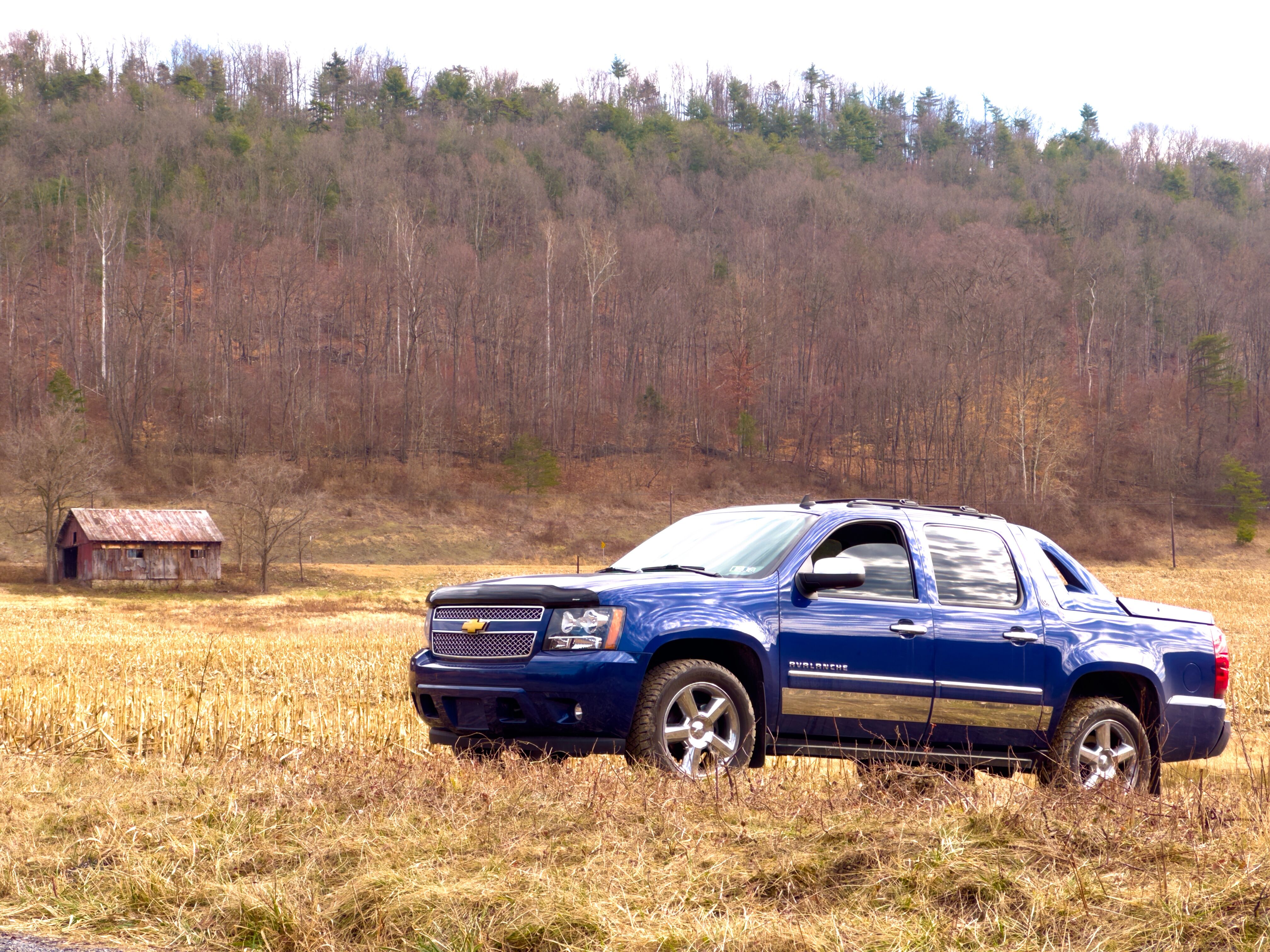-
Posts
56,009 -
Joined
-
Last visited
-
Days Won
551
Content Type
Forums
Articles
Garage
Gallery
Events
Store
Collections
Everything posted by Drew Dowdell
-

Genesis News: 2026 GV70 ICE and Electric Redesigned Unveiled
Drew Dowdell replied to G. David Felt's topic in Genesis
Just a mild refresh, but that's okay since the original was already class-leading.- 1 reply
-
- 1
-

-

Stellantis CEO Carlos Tavares quits over dispute with company board
Drew Dowdell posted an article in Stellantis
The CEO of Stellantis, Carlos Tavares resigned, effective immediately today, December 1st. In October of this year, Stellantis announced it had begun the search for a successor to CEO Tavares who was planning to step down sometime in 2026, but tensions were already rising between the board and Tavares after Stellantis issued profit warning guidance in September on its 2024 full-year results. A source inside the company said that the tensions between Tavares and the board stemmed from differing views on the direction of the company. The board was concerned that Tavares was moving too fast and focusing on near-term solutions rather than long term company health. Stellantis has been struggling with inventory mismatched to customer demands and a failure to move prior year models off lots. Overproduction of high-priced models has let to a glut of inventory at dealerships with more than 110 days of inventory of Ram Trucks and Jeep Grand Wagoneers, significantly higher numbers than crosstown competitors, Ford and General Motors. Tavares made a name for himself by helping turn around French automaker Renault under the leadership of Carlos Ghosen. He later led Peugeot parent PSA through an acquisition of Opel from General Motors and later the PSA merger with FCA to form Stellantis in 2021. -
The CEO of Stellantis, Carlos Tavares resigned, effective immediately today, December 1st. In October of this year, Stellantis announced it had begun the search for a successor to CEO Tavares who was planning to step down sometime in 2026, but tensions were already rising between the board and Tavares after Stellantis issued profit warning guidance in September on its 2024 full-year results. A source inside the company said that the tensions between Tavares and the board stemmed from differing views on the direction of the company. The board was concerned that Tavares was moving too fast and focusing on near-term solutions rather than long term company health. Stellantis has been struggling with inventory mismatched to customer demands and a failure to move prior year models off lots. Overproduction of high-priced models has let to a glut of inventory at dealerships with more than 110 days of inventory of Ram Trucks and Jeep Grand Wagoneers, significantly higher numbers than crosstown competitors, Ford and General Motors. Tavares made a name for himself by helping turn around French automaker Renault under the leadership of Carlos Ghosen. He later led Peugeot parent PSA through an acquisition of Opel from General Motors and later the PSA merger with FCA to form Stellantis in 2021. View full article
-
I have way too many e-mail addresses. There are few better feelings than cleaning out 2,000+ unread e-mails and actually deleting them rather than just "mark as read"
-
I don't like much from Ford in the '70s, but this is def nice.
-
I'm all in favor of the guillotine part of the cycle at the moment.
-
All. I'm cleaning up some file debris on the server this morning (taking backups first of course). I found a large (9g) chunk of image files that I don't think the site is actually using because they are stored elsewhere. I am zipping them up and moving them off the server to make our backups smaller. If you notice any images recently going missing, please let me know.
-
Pour one out for my grandmother who passed away Monday evening after a long hospice stay. She passed peacefully and pain free in her sleep. If you trace things back far enough, she is a big contributor to me being here on Cheers and Gears and thus C&G still existing. It was her and her 1979 Olds Custom Cruiser Diesel like the one below that got me into cars around the age of three. At three, it was my job to tell her when the Wait To Start Light went out so the could start the car and I got to press the garage door opener buttons.
-
What the heck is an Urban SUV?
-

Cadillac News: 2026 Baby Escalade IQ called VISTIQ
Drew Dowdell replied to G. David Felt's topic in Cadillac
I'm not so sure about the tail lights on the Lyriq, but on the Vistiq, they work. -

Cadillac News: 2026 Baby Escalade IQ called VISTIQ
Drew Dowdell replied to G. David Felt's topic in Cadillac
If the Lyriq's proportions are off, then so are all of the "crossover coupes" from BMW, Mercedes, Audi, and Acura. -

Cadillac News: First Electric V, Cadillac 2026 LYRIQ-V Edition
Drew Dowdell replied to G. David Felt's topic in Cadillac
Unlikely. Even in a Tesla Plaid you have to put it in Ludicrous mode and the Lucid Air Grand Touring makes you put it in the top model also to get that acceleration. Genesis and the V-Series just make it an easier to access dedicated button -

Cadillac News: First Electric V, Cadillac 2026 LYRIQ-V Edition
Drew Dowdell replied to G. David Felt's topic in Cadillac
I like how it has a V button, so you can drive it normally most of the time and press the V button when you need someone in your rearview mirror. The upper models of the Genesis GV60 has this and it is a ridiculous kick in the pants even at a much lower max power rating. -
We now also have a status monitoring page. https://status.cheersandgears.com/ This is independent of our web server and will let you know if things are out of whack and I can put a status message there if we're down. There is a link at the bottom right of the page if you ever forget.
-

Cadillac News: First Electric V, Cadillac 2026 LYRIQ-V Edition
Drew Dowdell replied to G. David Felt's topic in Cadillac
I saw a BMW X2 M@#$@#%-whatever the other day and thought the exact same thing. Not sporty looking unless you consider using old Pontiac Grand Am body cladding as sporty. But Americans are addicted to tall hatchbacks Sport Activity Vehicles.... so it is what it is. -

Cadillac News: 2026 Baby Escalade IQ called VISTIQ
Drew Dowdell replied to G. David Felt's topic in Cadillac
The current 2.0T debuted in the XT4 and then went to Buick..... Not that GM has divisional engines anymore since the Northstar went out to pasture. I'm not a big fan of the Lyriq styling, but I think this one is out of the park good. It can be parked proudly next to a high-zoot Range Rover and looks much better than the EQE SUV. As far as luxury EV SUVs out there, I think, at least in appearance, the Vistiq is the new king. -
-
All of this. Though the second gen CTS did gain a lot of weight in roughly the same footprint and wasn't as nimble. This is when the CTS started chasing the 5-series more seriously and had the interior to do that. Cadillac did this because they knew the ATS was coming. Unfortunately, the CTS grew in size even more for the 3rd generation, and while it did get some nimbleness back, it is nearly the size of the 300C. The ATS was a fantastic vehicle for sporty driving and if I were single, I'd look at a Turbo-4 coupe with a manual, but they are just too small for more than 2 people.
-
For storage, Wasabi S3 is a competitor to Amazon S3 at significantly lower price. We've been using it here for photo storage for more than a year, but I got the backups copying to it now also.
-
We now have working backups again, and they run daily, and are transferred to Wasabi off-site storage automatigically
-
Of course there's this CTS 3.6 with a manual and low milage on Auto Trader right now..... taunting me.
-
The Costco parking lot. I like the 300C and I like the Avalanche, but sometimes navigating them around in traffic and parking lots is a bear. The 300C isn't even drastically larger than the CTS, but the CTS was much more nimble and had a very tight turning radius. It was also ~3,400 lbs, 200 lbs lighter than a base 2025 3-series. It was just light and nimble, but every bit as comfortable on the highway as the 300C is. It's a shame that most of that generation have been trashed. Put a nice CarPlay unit in one and I'd be happy.
-
Anyone have a weird longing for a car they sold or traded a while ago? I don't mean something that got wrecked or stolen, that was out of your control. Just a car that you traded/sold but now regret doing that? That hit me hard today for my 2004 CTS.
-
Thank you very much. For my birthday last year I got a gift card for a spa day package which I booked for my birthday this year. So I spent the day yesterday getting a facial and a massage and it was fantastic. Little did I know when I booked it how needed it would be.
-
The redundancy isn't there yet. I have a bunch of other websites to restore. But it will be the first thing done when I'm done with those.













